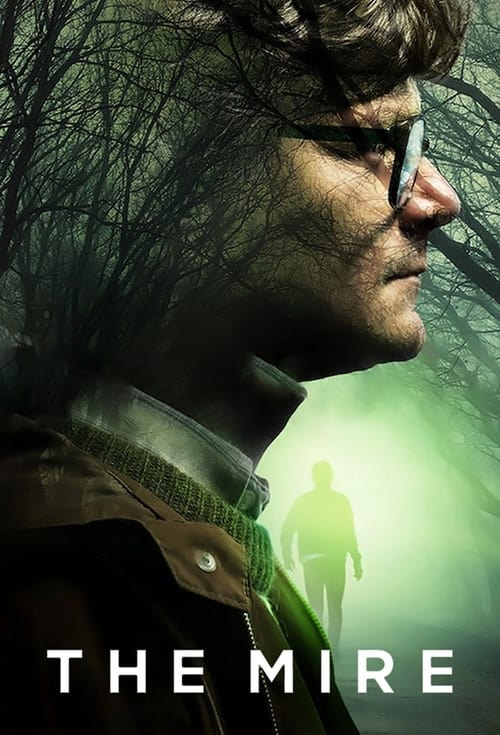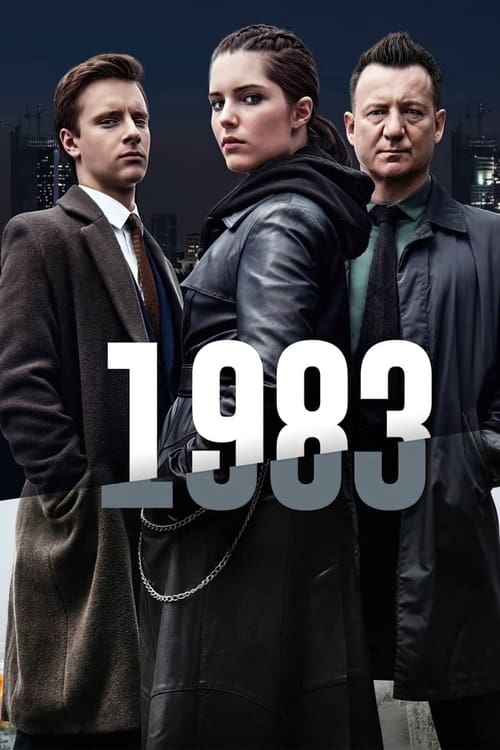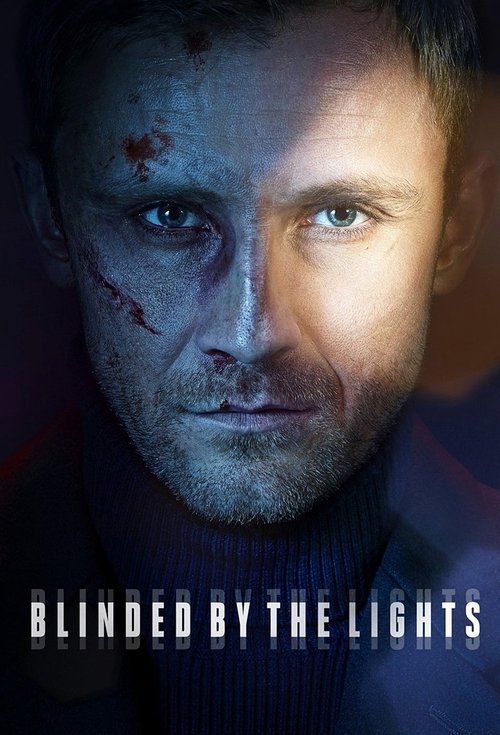
Ask Your Own Question
What is the plot?
In the opening scenes of "Ślad," we are introduced to the main character, a dedicated police officer named Kaja, who is deeply invested in her work. She is seen investigating a series of mysterious disappearances in her town, which have left the community on edge. Kaja's determination is palpable as she interviews witnesses and examines evidence, revealing her strong sense of justice and commitment to her role.
As Kaja delves deeper into the case, she discovers a connection between the missing persons and a local nightclub. This leads her to confront the club's owner, who is evasive and seems to be hiding something. Kaja's frustration grows as she feels the pressure from her superiors to solve the case quickly. Her personal life begins to suffer as she becomes increasingly consumed by the investigation, straining her relationship with her partner, who feels neglected.
In a pivotal moment, Kaja receives a tip-off about a potential suspect linked to the disappearances. She follows this lead to a rundown part of town, where she encounters a group of individuals who are reluctant to cooperate. Tension escalates as Kaja tries to assert her authority, but she is met with hostility. This confrontation highlights her determination but also her vulnerability, as she realizes the dangers of her pursuit.
Kaja's investigation takes a dark turn when she uncovers evidence of a human trafficking ring operating in the area. This revelation shocks her, and she becomes even more determined to bring those responsible to justice. She begins to work closely with a local informant, who provides her with crucial information about the inner workings of the trafficking operation. Their relationship is fraught with tension, as Kaja struggles to trust the informant while also relying on their knowledge.
As Kaja gathers more evidence, she faces increasing resistance from both the criminal elements and her own department, which is wary of her aggressive tactics. In a critical scene, she confronts her superiors about the need for more resources to tackle the trafficking issue, but they dismiss her concerns, prioritizing public relations over the investigation. This moment solidifies Kaja's resolve to take matters into her own hands.
The plot thickens when Kaja discovers that someone close to her is involved in the trafficking ring. This betrayal hits her hard, leading to a mix of anger and heartbreak. She grapples with feelings of isolation as she realizes that she cannot trust those around her. This internal conflict drives her to make a risky decision: to go undercover to gather more evidence against the traffickers.
In her undercover role, Kaja infiltrates the trafficking operation, posing as a potential victim. The tension is palpable as she navigates this dangerous world, constantly aware of the risks to her safety. During this time, she witnesses the horrific conditions in which the victims are kept, fueling her determination to dismantle the operation from within.
As Kaja gathers intelligence, she forms a bond with another victim, who shares her harrowing story. This connection deepens Kaja's emotional investment in the case, as she becomes more than just a police officer; she becomes a protector. However, her cover is eventually blown, leading to a frantic escape sequence where Kaja must use her wits and training to evade capture.
In a climactic confrontation, Kaja returns to the police station with the evidence she has collected. She presents her findings to her superiors, who are initially skeptical but eventually recognize the gravity of the situation. A coordinated raid is planned to take down the trafficking ring, and Kaja is at the forefront, driven by her desire for justice.
The raid unfolds with high tension as Kaja and her team storm the location where the traffickers are operating. The scene is chaotic, filled with gunfire and the sounds of struggle. Kaja's training kicks in as she navigates the chaos, determined to rescue the victims and apprehend the criminals. The action is intense, with close calls and moments of bravery as Kaja fights to save lives.
In the aftermath of the raid, Kaja reflects on the toll the investigation has taken on her. She has successfully dismantled the trafficking ring, but the emotional scars remain. The final scenes show her grappling with the impact of her choices, both personally and professionally. Kaja stands at a crossroads, contemplating her future as she comes to terms with the darkness she has faced and the lives she has fought to save.
What is the ending?
In the ending of the TV show "Ślad," the main characters confront the consequences of their actions throughout the series. The story culminates in a tense showdown that reveals deep-seated motivations and the impact of their choices. The fates of the key characters are sealed, leading to a resolution that ties together the various threads of the narrative.
As the final episodes unfold, we see the characters grappling with their past decisions. The protagonist, who has been on a quest for justice, faces a moral dilemma that tests their resolve. The antagonist, whose actions have driven much of the conflict, is confronted by the consequences of their manipulations. The emotional stakes are high, and the tension builds as the characters come to terms with their fates.
In the climactic scenes, the protagonist makes a pivotal choice that reflects their growth and understanding of the complexities of justice and revenge. The resolution brings closure to their journey, while also leaving lingering questions about morality and the human condition.
As the final episode of "Ślad" begins, the atmosphere is thick with tension. The protagonist, a determined investigator, stands at the edge of a dimly lit warehouse, the site of a final confrontation. The air is heavy with anticipation, and the shadows cast by flickering lights create an ominous backdrop. The investigator's heart races, a mix of fear and resolve coursing through them as they prepare to face the antagonist, a figure shrouded in deceit and manipulation.
Scene 1: The Confrontation The investigator steps inside, the sound of their footsteps echoing against the cold concrete walls. They call out, their voice steady despite the adrenaline surging through them. The antagonist emerges from the shadows, a smirk playing on their lips, exuding confidence. The dialogue is sharp, filled with accusations and revelations. The antagonist reveals their motivations, a twisted sense of justice that has driven them to commit heinous acts. The investigator listens, their expression a mix of anger and pity, understanding the pain that has warped the antagonist's sense of right and wrong.
Scene 2: The Climax As the confrontation escalates, the tension reaches a boiling point. The investigator, fueled by a desire for justice, challenges the antagonist's worldview. The emotional stakes are palpable; the investigator's internal struggle is evident as they grapple with the desire for revenge versus the need for justice. The antagonist, feeling cornered, lashes out, leading to a physical altercation. The scene is chaotic, filled with the sounds of struggle and the clatter of objects being knocked over. In a moment of vulnerability, the antagonist reveals a glimpse of their humanity, a fleeting moment that complicates the investigator's feelings.
Scene 3: The Resolution In the aftermath of the confrontation, the investigator stands over the defeated antagonist, breathing heavily, the weight of their choices pressing down on them. They realize that true justice cannot be achieved through violence. Instead, they choose to call the authorities, allowing the antagonist to face the consequences of their actions in a legal manner. This decision marks a significant turning point for the investigator, showcasing their growth and understanding of the complexities of morality.
Scene 4: The Aftermath As the dust settles, we see the investigator walking away from the warehouse, the sun beginning to rise on the horizon. The light symbolizes hope and a new beginning. The emotional turmoil of the past lingers, but there is a sense of peace in their decision. The final scenes show the investigator reconnecting with loved ones, emphasizing the importance of relationships and healing. The antagonist, now in custody, reflects on their choices, a mixture of regret and defiance in their eyes.
In the closing moments, the camera pans out, capturing the investigator standing tall, a figure of resilience against the backdrop of a new day. The series ends on a note of ambiguity, leaving viewers to ponder the nature of justice and the human experience, while the fates of the characters serve as a reminder of the consequences of their actions.
Is there a post-credit scene?
In the 2018 TV show "Ślad," there is no post-credit scene. The series concludes its narrative without any additional scenes after the credits roll. The final moments of the show focus on the resolution of the main plotlines and character arcs, providing closure to the viewers without extending into a post-credit sequence. The emphasis remains on the emotional journeys of the characters and the culmination of their stories, leaving the audience with a sense of completion.
What role does the setting play in the development of the plot?
The setting of Ślad, primarily the gritty urban landscape, serves as a character in itself, reflecting the dark themes of the series. The atmospheric streets, abandoned buildings, and shadowy corners create a sense of foreboding that mirrors the internal struggles of the characters. This environment heightens the tension in the narrative, as Kaja and her team navigate both the physical and emotional dangers of their investigations.
What motivates the main character, detective Kaja, throughout the series?
Detective Kaja is driven by a deep sense of justice and a personal connection to the cases she investigates. Her past experiences, including the loss of a loved one, fuel her determination to solve crimes and bring closure to victims' families. This emotional weight often leads her to take risks, pushing her to the edge as she navigates the complexities of each case.
How does the relationship between Kaja and her partner evolve over the series?
Initially, Kaja and her partner have a professional but somewhat strained relationship, marked by differing approaches to their work. As they face various challenges together, including dangerous situations and personal revelations, their bond deepens. They begin to trust each other more, sharing vulnerabilities and supporting one another, which ultimately strengthens their partnership both professionally and personally.
What are the key turning points in Kaja's investigation of the serial killer?
Key turning points in Kaja's investigation include the discovery of a crucial piece of evidence that links the victims, a shocking betrayal from someone close to her, and a near-fatal encounter with the killer. Each of these moments not only propels the plot forward but also forces Kaja to confront her own fears and doubts, ultimately leading her to a deeper understanding of the case and herself.
How does the series explore the theme of personal loss through its characters?
Personal loss is a recurring theme in Ślad, particularly through Kaja's character, who grapples with the death of her sister. This loss shapes her worldview and influences her interactions with other characters, many of whom also carry their own burdens of grief. The series poignantly illustrates how these experiences of loss impact their motivations and decisions, creating a rich emotional tapestry that drives the narrative.
Is this family friendly?
"Ślad," produced in 2018, is a Polish crime drama that delves into themes of mystery, investigation, and personal struggles. While it offers a gripping narrative, it contains several elements that may not be suitable for children or sensitive viewers.
-
Violence and Crime: The show features scenes of crime, including murder investigations, which may include graphic depictions of violence or the aftermath of violent acts.
-
Emotional Turmoil: Characters often experience intense emotional distress, including grief, betrayal, and moral dilemmas, which can be heavy and unsettling.
-
Adult Themes: The series explores complex adult relationships, including infidelity and personal conflicts, which may not be appropriate for younger audiences.
-
Dark Atmosphere: The overall tone of the show is somber and tense, with a focus on darker aspects of human nature and societal issues, which might be distressing for some viewers.
-
Substance Use: There are instances of characters dealing with issues related to alcohol or drug use, which may be concerning for younger viewers.
These elements contribute to a narrative that is more suited for mature audiences, and parental discretion is advised when considering it for children or sensitive individuals.























